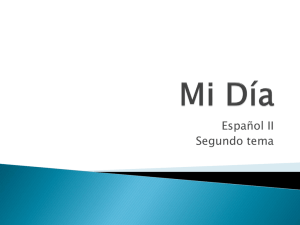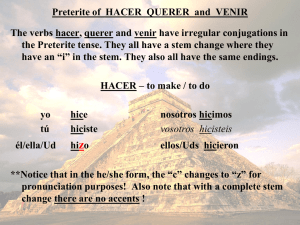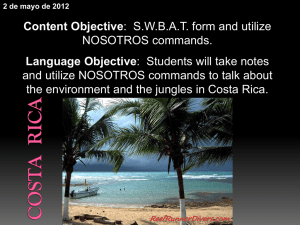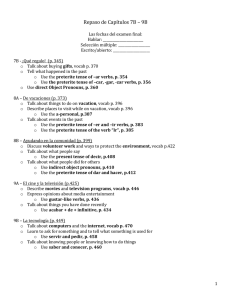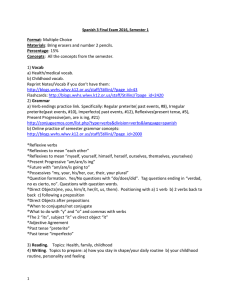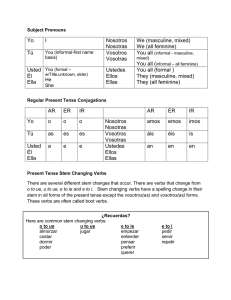Regular preterite verbs
advertisement
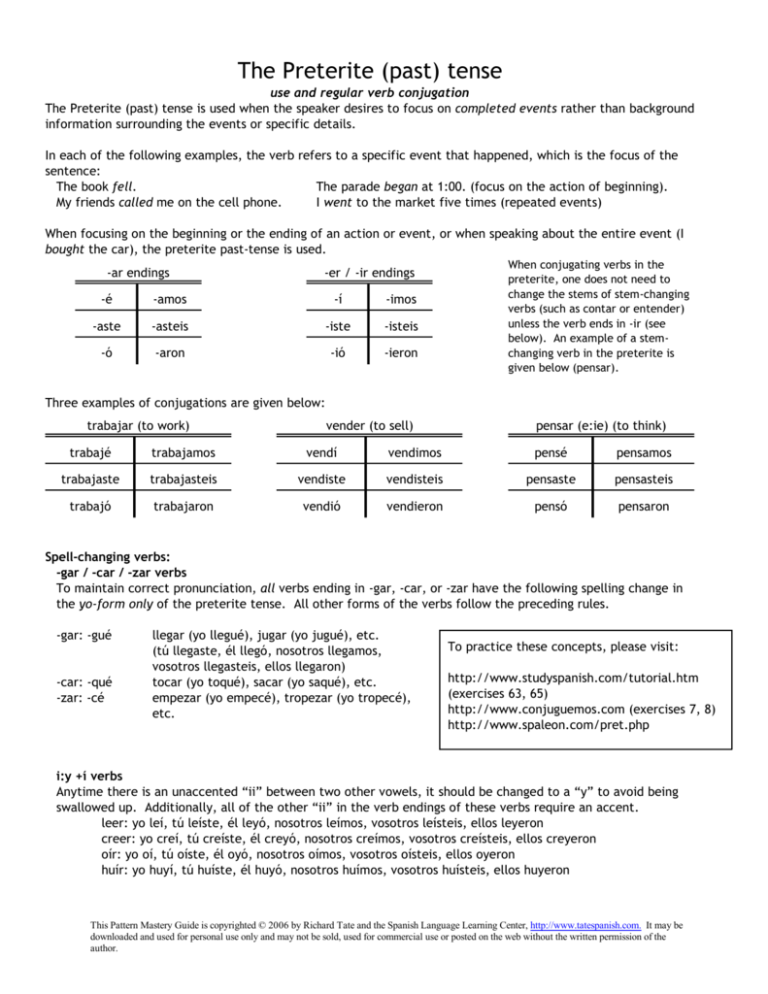
The Preterite (past) tense use and regular verb conjugation The Preterite (past) tense is used when the speaker desires to focus on completed events rather than background information surrounding the events or specific details. In each of the following examples, the verb refers to a specific event that happened, which is the focus of the sentence: The book fell. The parade began at 1:00. (focus on the action of beginning). My friends called me on the cell phone. I went to the market five times (repeated events) When focusing on the beginning or the ending of an action or event, or when speaking about the entire event (I bought the car), the preterite past‐tense is used. ‐ar endings ‐er / ‐ir endings ‐é ‐amos ‐í ‐imos ‐aste ‐asteis ‐iste ‐isteis ‐ó ‐aron ‐ió ‐ieron When conjugating verbs in the preterite, one does not need to change the stems of stem‐changing verbs (such as contar or entender) unless the verb ends in ‐ir (see below). An example of a stem‐ changing verb in the preterite is given below (pensar). Three examples of conjugations are given below: trabajar (to work) vender (to sell) pensar (e:ie) (to think) trabajé trabajamos vendí vendimos pensé pensamos trabajaste trabajasteis vendiste vendisteis pensaste pensasteis trabajó trabajaron vendió vendieron pensó pensaron Spell‐changing verbs: ‐gar / ‐car / ‐zar verbs To maintain correct pronunciation, all verbs ending in ‐gar, ‐car, or ‐zar have the following spelling change in the yo‐form only of the preterite tense. All other forms of the verbs follow the preceding rules. ‐gar: ‐gué ‐car: ‐qué ‐zar: ‐cé llegar (yo llegué), jugar (yo jugué), etc. (tú llegaste, él llegó, nosotros llegamos, vosotros llegasteis, ellos llegaron) tocar (yo toqué), sacar (yo saqué), etc. empezar (yo empecé), tropezar (yo tropecé), etc. To practice these concepts, please visit: http://www.studyspanish.com/tutorial.htm (exercises 63, 65) http://www.conjuguemos.com (exercises 7, 8) http://www.spaleon.com/pret.php i:y +í verbs Anytime there is an unaccented “ii” between two other vowels, it should be changed to a “y” to avoid being swallowed up. Additionally, all of the other “ii” in the verb endings of these verbs require an accent. leer: yo leí, tú leíste, él leyó, nosotros leímos, vosotros leísteis, ellos leyeron creer: yo creí, tú creíste, él creyó, nosotros creímos, vosotros creísteis, ellos creyeron oír: yo oí, tú oíste, él oyó, nosotros oímos, vosotros oísteis, ellos oyeron huír: yo huyí, tú huíste, él huyó, nosotros huímos, vosotros huísteis, ellos huyeron This Pattern Mastery Guide is copyrighted © 2006 by Richard Tate and the Spanish Language Learning Center, http://www.tatespanish.com. It may be downloaded and used for personal use only and may not be sold, used for commercial use or posted on the web without the written permission of the author.
